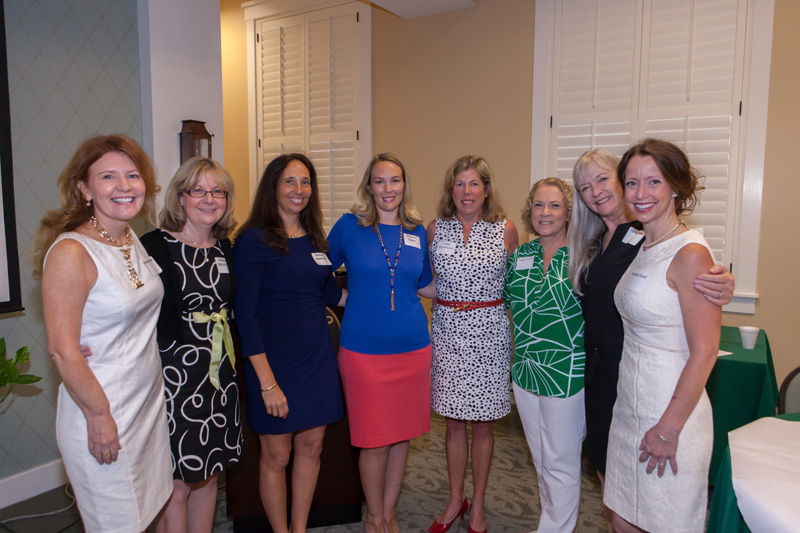Advocates, program leaders and funders of early childhood development initiatives gathered last Tuesday at Northern Trust Bank for a daylong community summit hosted by the Kindergarten Readiness Collaborative, an offshoot of The Learning Alliance.
Barbara Hammond, TLA executive director, said the Moonshot Moment goal to have 90 percent of third-graders reading at grade level by 2018, a partnership with the school district, was somewhat based on an early learning program in Kennewick, WA.
“When we went out to visit them, one of the primary drivers of their success was that they understood that kindergarten readiness was critical, because education starts at conception. It doesn’t start with kids enrolling in school at 5,” said Hammond. “Right after that we realized that we needed much more community collaboration. And so that was the genesis of a meeting that took place with 70 community leaders in the fall of 2011, really focused on what can the community do to help with the Moonshot Moment goal, because schools can’t do it alone.”
“That was the first time that leaders from the community and leaders from the district actually envisioned together what it would look like if we achieved 90 percent literacy in this county,” said TLC consultant Heidi Guber. “And the most important thing about that conversation was that there were people from all segments. Every sector got to look at what that gateway statistic meant for them. It wasn’t just about reading; it was about prosperity in this community.”
Saying communities nationwide now want to emulate the Moonshot collaborative, she added, “The power of the community recognizing that possibility and having an enlightened superintendent who actually stated the Moonshot goal is really unique in this country. The willingness to agree to learn and apply and share together is what really makes this unique.”
“Our vision is that every parent, regardless of zip code, knows that they are their child’s first teacher, and that education starts at conception,” said Hammond. “What we know is that social and emotional skills are the gateway to learning. They have to be fed with nutrition, and they have to be given love to connect, so they feel socially and emotionally ready. And then we need to play, talk and read to them so that they reach their milestones.”
“Touch is so important for an infant; they need it as much as they need nutrition to grow. The first milestone for an infant is to learn trust,” added Kathie Cain, Healthy Start Coalition executive director.
Healthy Start’s home-based programs are getting the “power of parenting” message to mothers in their own cultural environment, connecting parents to the numerous community resources available to them.
“It’s the leadership that the mothers need. Mothers want to emulate what they see,” said Rev. Greg Pitts, a leader in the Gifford community. “You lead them; you walk them through until they succeed. Give them an example, a goal that they can obtain. It’s the will of the parent for the kid to be successful.”
Sue Curtis, TLA educational consultant, said a common parental complaint is having insufficient time to interact with their children, but noted that everyday moments – in the car, grocery store, mealtime, bath time – can easily become teaching opportunities. “There are very simple activities that can be done with what parents have on hand. The simpler it is, the better it is.”
“Every child comes wrapped very differently; very uniquely,” said Kim McCorrison, recently retired school readiness coordinator. “There’s a lot going on in that little bitty body.”
She commented on the importance of identifying problem areas and intervening early through screenings for social/emotional health, physical health and well-being, cognitive ability, communication/speech and adaptive skills.
Hope Woodhouse, who serves on the Children’s Services Advisory and Kindergarten Readiness Collaborative, noted the importance of quality, accessible, affordable pre-kindergarten programs.
“Emphasis on quality,” she added. “All the data shows that it’s a quality program that is successful; not just putting a child somewhere.”
Although the cost of quality programs ranges anywhere from about $10,000 to $22,000, the State of Florida contributes just $2,250 for every 4- and early 5-year old to attend a VPK (voluntary pre-k) program. But Florida’s VPK standards meet only three out of 10 NIEER (National Institute for Early Education Research) standards, have minimal licensing requirements and no quality rating system. Inadequate VPK teacher credentials are attributed to minimum wage pay.
The Department of Education lists all providers who accept VPK money and indicates how many of their children are kindergarten-ready, based on an assessment after the first 45 days of kindergarten. The readiness range varies from 29 percent to 100 percent, with those under 70 percent becoming, “providers on probation.”
“In our county, 10 out of the 35 providers are providers on probation. They serve 25 percent of the kids; that’s a big number,” said Woodhouse.
A lack of funding is the primary factor.
“Martin County is a very similar county,” said Woodhouse. “They have a children’s council with a millage, which generates $6 million a year. They use that money to get matching federal and state grants. They bring $10 million into a county that is just like us. Compare that to what our county has been providing for the last five years; $623,000. So Indian River County is getting 10 percent of what Martin County gets.”
“What we see, perhaps as the organizational infrastructure, is something that’s focused on school readiness that encompasses a comprehensive approach, and I would say an emergent learning approach, beginning prenatally,” said Kerry Bartlett. “We’ve got to work on finding permanent funding, because we can’t sustain these programs without sustainable funding. This is a long-time project; and there is no finish line.”

